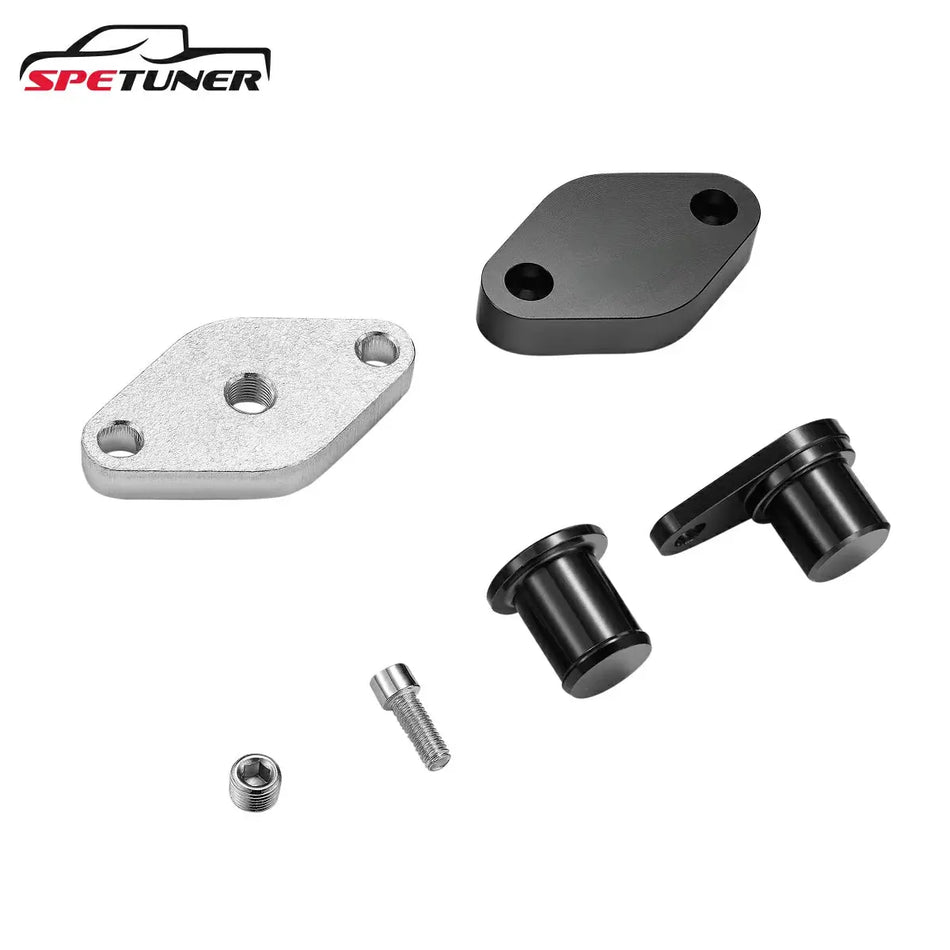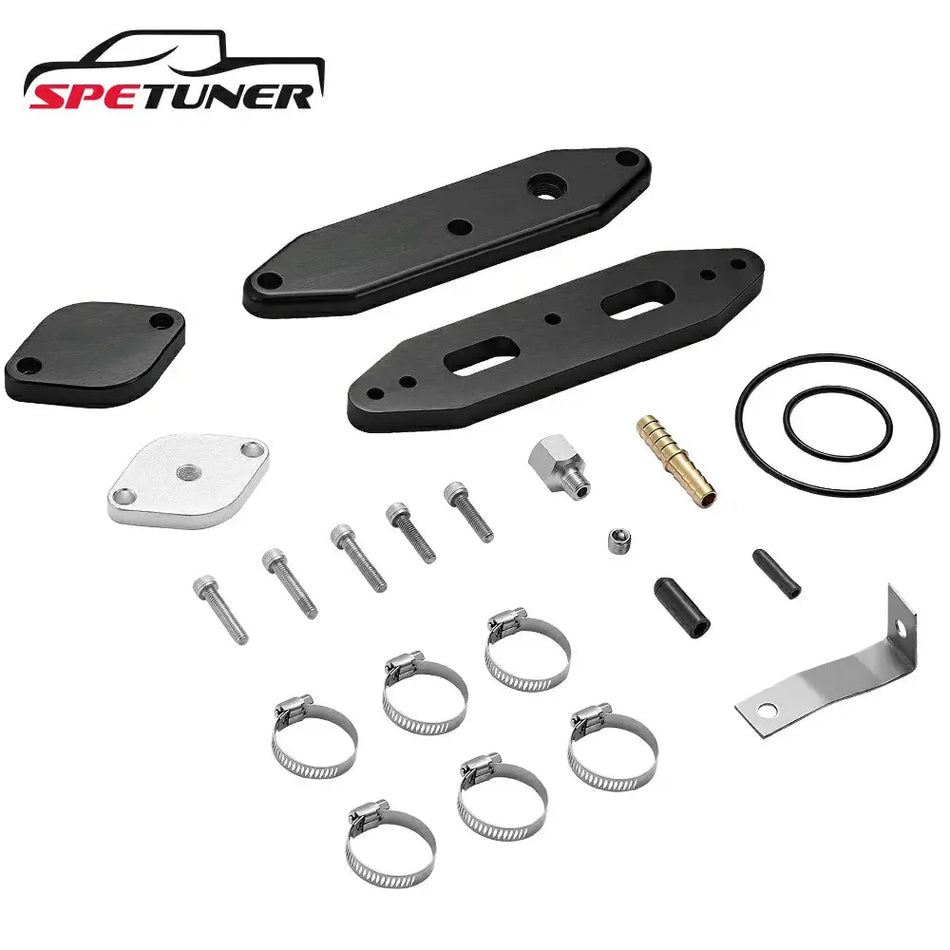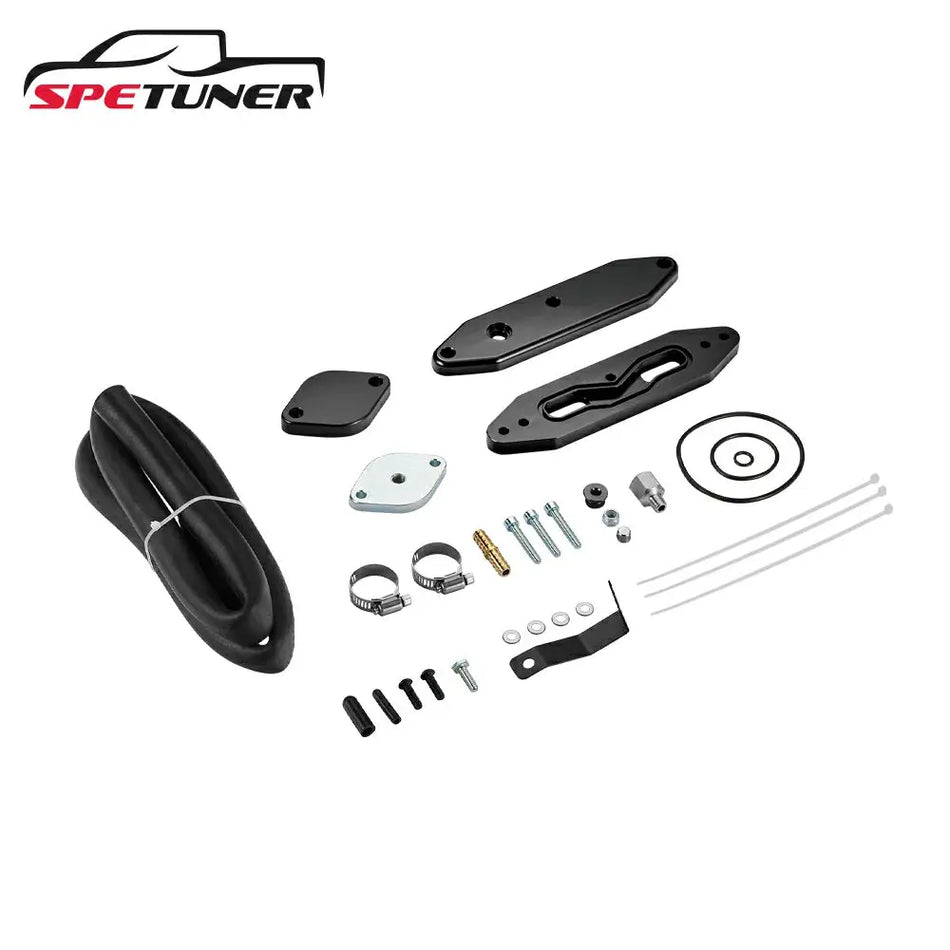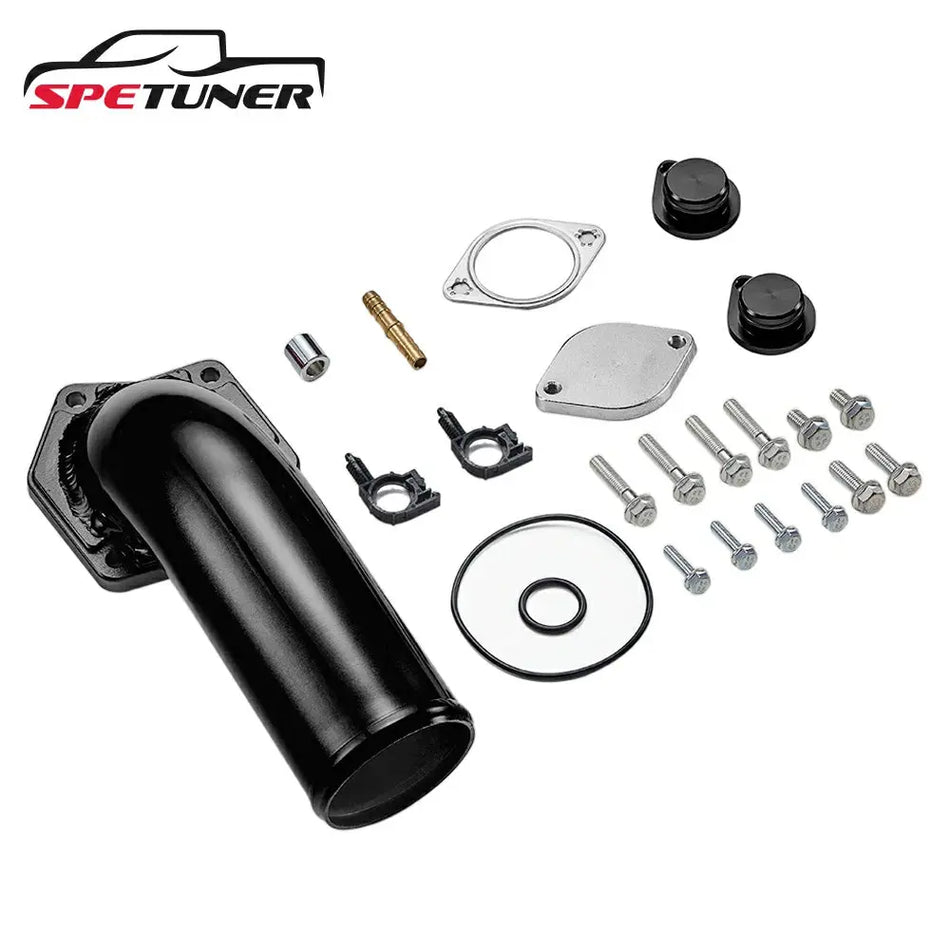What Does "Deleted" Mean for a 6.7 Powerstroke?
Before we dive into how long a deleted 6.7 Powerstroke engine lasts, it's crucial to understand what the term “deleted” actually means. Deleting refers to removing or bypassing certain emissions control systems in the engine. These systems, while helping reduce pollutants, can also impact performance. By removing them, truck owners can unlock more power and efficiency.
Key Components Removed in a Powerstroke Delete
A typical delete involves the removal of three main components from the engine’s exhaust and emissions system:
DPF (Diesel Particulate Filter): This filter captures harmful particulate matter from the exhaust. It’s designed to keep emissions cleaner, but it can create backpressure that affects engine performance.
EGR (Exhaust Gas Recirculation): The EGR system recirculates exhaust gases back into the engine to reduce nitrogen oxide (NOx) emissions. This system can increase engine temperatures and contribute to carbon buildup over time.
SCR (Selective Catalytic Reduction): SCR uses a solution known as DEF (Diesel Exhaust Fluid) to reduce NOx emissions. While effective for lowering pollutants, it can be costly and adds complexity to the system.

How Long Can a Deleted 6.7 Powerstroke Last?
Now that we understand what a deleted 6.7 Powerstroke is, let’s get into the main question: how long can it last after a delete? The truth is, a well-maintained deleted engine can last quite a long time, but there are a few factors that play into this.
Typical Lifespan of a Deleted 6.7 Powerstroke
With proper care, many truck owners report that their deleted 6.7 Powerstroke engines last between 200,000 to 300,000 miles or more. This is fairly impressive, considering the enhanced performance and reduced strain on the engine after the delete.
However, some owners have been able to push well beyond 300,000 miles, but only with consistent maintenance and the use of high-quality parts. Keep in mind, neglecting basic maintenance can significantly shorten the lifespan of your engine, even with a delete.
Factors Affecting Engine Longevity After a Delete
Several factors can affect how long your deleted engine lasts:
Maintenance: Proper, regular maintenance is the key to any engine’s longevity. Without regular oil changes, coolant checks, and air filter replacements, your deleted Powerstroke could experience unnecessary wear and tear.
Quality of Parts: If low-quality delete kits or replacement parts are used, your engine may face issues down the road. SPETUNER provides high-performance delete kits and parts that ensure your engine runs smoothly for years.
Driving Habits: Hard towing, off-roading, or constant high-speed driving can add stress to your engine. If you're frequently pushing your engine to its limits, you may need to adjust your maintenance schedule to compensate for the extra strain.
How to Extend the Life of a Deleted 6.7 Powerstroke

Now that you know the factors influencing the lifespan of a deleted 6.7 Powerstroke, let's discuss how to extend that life. Keeping your truck running strong for as long as possible involves some important steps.
Importance of Regular Maintenance
First and foremost, regular maintenance is critical. Just because your engine has been deleted doesn’t mean you can skip the regular check-ups.
Oil Changes: After a delete, it’s essential to change your oil every 5,000 to 7,500 miles. This helps to keep the engine running smoothly, especially since the removal of the DPF and EGR systems can slightly affect oil quality over time.
Fuel Filter Replacement: Diesel engines are sensitive to fuel quality, so changing the fuel filter every 15,000 miles ensures that any impurities don’t damage your engine’s internal components.
Cooling System: Keeping your cooling system in top shape is essential, especially since deleting can lead to higher engine temperatures. Regularly check the coolant and make sure the radiator is in good working order.
By sticking to these maintenance practices, you’ll significantly increase the lifespan of your deleted Powerstroke.
Choosing the Right Delete Kit
When performing a delete, the quality of the egr and dpf delete kits you choose plays a huge role in how well your engine performs and lasts. Cheap, low-quality kits can cause future mechanical problems, like leaks or improperly tuned systems.
SPETUNER offers top-tier, performance-driven delete kits specifically designed for the 6.7 Powerstroke, ensuring optimal performance and durability. Using quality kits reduces the chances of early mechanical failures and keeps your engine running longer.
Proper Tuning for Longevity
After a delete, your engine will need proper tuning to ensure it operates efficiently. Deleting the emissions systems changes how your engine functions, so it’s crucial to recalibrate the engine’s control module (ECM) for optimal performance.
Without the right tuning, your truck might experience increased wear, poor fuel efficiency, or even engine misfires. Using a SPETUNER performance tuner ensures that your truck’s ECM is recalibrated correctly, helping it perform at its best while extending its lifespan.

FAQs
In this section, we'll address some of the most common questions about deleted 6.7 Powerstroke engines. This will help clarify any lingering concerns and provide more details on what you need to know.
Q: Is It Safe to Delete My 6.7 Powerstroke?
Deleting your 6.7 Powerstroke can be safe if done correctly. By using high-quality parts and performing proper tuning, the engine can run efficiently without the emissions systems. However, keep in mind that:
Legal Considerations: Deleting the emissions systems is illegal in many areas, especially for vehicles that will be driven on public roads. Always check local regulations before proceeding with a delete.
Warranty Issues: Performing a delete can void your truck’s warranty. If your truck is still under warranty, consider whether the performance gains are worth the potential loss of warranty coverage.
Q: How Often Should I Change the Oil on a Deleted 6.7 Powerstroke?
After deleting your 6.7 Powerstroke, it's essential to stay on top of oil changes. Depending on your driving conditions, you should change your oil every 5,000 to 7,500 miles. This interval helps maintain engine health and ensures the oil remains clean and effective at lubricating the engine components.
Regular oil changes are even more critical for deleted engines, as the absence of the DPF and EGR systems can lead to higher engine temperatures and more soot buildup.
Q: Will Deleting My Truck Improve Fuel Efficiency?
Yes, many truck owners report better fuel economy after performing a delete, especially during heavy towing or highway driving. Removing the DPF and EGR systems reduces engine backpressure, allowing the engine to run more efficiently.
However, keep in mind that your truck's overall fuel efficiency will depend on factors like driving habits, load, and whether you're regularly maintaining the truck.
Q: Can I Reverse a Delete if I Change My Mind?
In some cases, yes, you can reverse a delete. However, it can be costly and labor-intensive. You would need to reinstall all the original emissions components (DPF, EGR, SCR), which could involve significant parts and labor costs. If you’re considering this, it’s better to weigh the costs carefully before deleting in the first place.
Q: Do I Need a Special Tuner for a Deleted 6.7 Powerstroke?
Yes, after performing a delete, you will need a special truck tunes to recalibrate your engine’s control module (ECM) properly. The delete process alters how your truck’s engine operates, so tuning is necessary to ensure it runs smoothly and efficiently.
SPETUNER offers high-performance tuners specifically designed for deleted trucks. These tuners ensure that your engine is properly adjusted for the absence of emissions systems, leading to improved performance and longevity.
Q: How Can I Make My Deleted 6.7 Powerstroke Last Longer?
To extend the life of your deleted 6.7 Powerstroke, follow these simple steps:
Stick to a regular maintenance schedule, including oil changes, coolant checks, and filter replacements.
Use high-quality parts during the delete process, such as the SPETUNER delete kits and performance tuners, to ensure optimal performance.
Adjust your driving habits to avoid excessive strain, especially during towing or off-roading.
By combining these best practices, you can keep your engine running smoothly for many miles to come.










